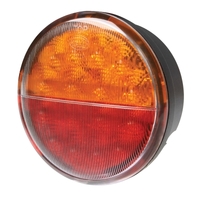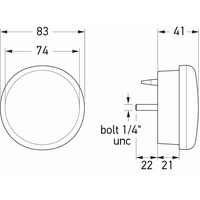May not fit your vehicle
Fits your vehicle
Hella Tail light 2399
| SKU: | 2399 |
Hella Tail light 2399
Function of a Tail Light in a Car
A tail light in a car serves an essential safety function. It is located on the back of the vehicle and emits a red light to alert other drivers about the presence and position of the car, especially in low-light conditions or during nighttime. The primary purpose of a tail light is to increase the visibility of the vehicle from behind and indicate its movement, such as when braking or signaling a turn. The tail light also helps communicate the driver's intentions and aids in preventing rear-end collisions by giving following vehicles enough time to react or adjust their driving accordingly.
The electrical mechanism of a tail light involves various components, including a bulb or LED (Light Emitting Diode), wiring, and a housing. When the driver activates the headlights or brake pedal, an electrical current is sent to the tail light, causing the bulb or LED to illuminate. This emits a red light that is bright and easily noticeable. Additionally, some tail lights may have built-in features like a reflector or a rear fog light, further enhancing visibility and safety by reflecting incoming light or cutting through haze or fog for improved awareness on the road.
|
Mounting Type |
Bolted |
|
Light Design |
LED |
|
Rated Voltage [V] |
12 |
|
Rated Voltage [V] |
24 |
|
Number of light functions |
3 |
|
Diameter [mm] |
83 |
|
Height [mm] |
40 |
|
Shape |
Round |
|
Cable Length [mm] |
2500 |
|
Lamp Type |
LED |
|
Light Function |
with flashing light (LED) |
|
Light Function |
with brake light (LED) |
|
Light Function |
with Taillight (LED) |
|
Fitting Position |
Right |
|
Fitting Position |
Left |
|
Power Consumption [W] |
7 |
|
Protection Type (IP Code) |
IP 6K7 |
|
Protection Type (IP Code) |
IP 6K9K |
|
Test Mark |
ECE R7/02 |
|
Test Mark |
ADR 6/00: Cat 2a |
|
Test Mark |
ADR 49/00 |
|
Test Mark |
E9 1538 |
|
Test Mark |
ECE R6/01 |
|
Quantity |
2 |
|
Must be installed/removed by a specialist! |
|










